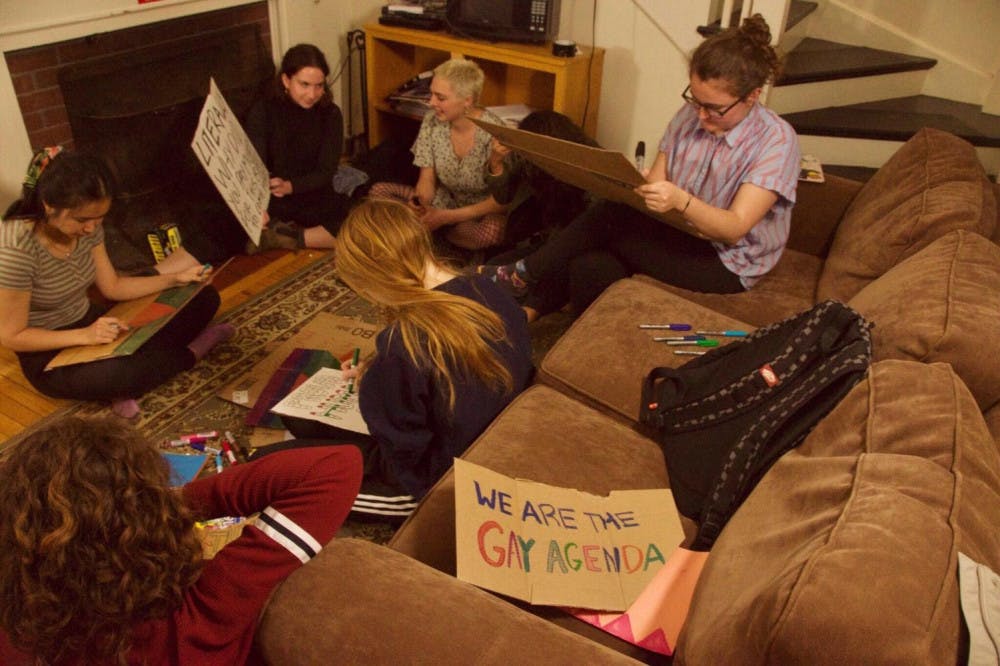A committee of faculty, staff and students proposed a new college protest policy at the April 26 faculty meeting. They developed the new policy collaboratively in response to the unpopular draft protest policy published online last November. While the initial draft policy, written by General Counsel Hannah Ross, was criticized for its ambiguity, the new policy aims to be as clear as possible in upholding the three pillars of the college’s academic mission: academic freedom, respect and integrity.
“How do we experience freedom and express respect and have integrity simultaneously?” asked Michael Sheridan, associate professor of anthropology and a member of the policy committee, in an interview with The Campus. “By definition, protest is disruption.”
The committee is not attempting to define the right way to protest, Sheridan said, but is trying to reduce ambiguity through the creation of a space for things to be done right.
The goal of the draft policy is to determine what happens when the conflict mechanisms of non-disruptive protest are unsuccessful. The committee, led by Amy Briggs, professor of computer science, considers development of institutional mechanisms and protocol regarding policy enforcement to be a necessary next step, but sees it as something beyond the scope of the committee’s designated task.
Sheridan said the student members — Ami Furgang ’20, Lily Barter ’19.5, Taite Shomo ’20.5 and Grace Vedock ’20 — drew inspiration from out protest policies from Brown University and Colorado College, which they saw as especially “interesting and compelling and useful.”
The committee set out to “work through what a Middlebury-centric policy would look like, trying to capture the kind of clarity and the kind of issues that were in those other policies,” Sheridan said.
The modified draft that the committee developed after receiving feedback, and plans to present at the May meeting, is organized beneath five headers: “Protest and demonstration are rooted in our educational mission,” “Public speech must be consistent with academic freedom, integrity, and respect,” “Peaceful protest and demonstration are important forms of activism,” “All students and employees can engage in non-disruptive protest and demonstration,” and “Disruptive behavior will be subject to sanction.”
Though the committee’s new draft is more concise than Ross’s, it is still much longer than Brown’s twelve-sentence policy. Rick Bunt, professor of chemistry & biochemistry, said at the faculty meeting that the Brown policy was “pithy,” able to convey a lot of information in few words. He questioned whether shortening the new draft could make it even more effective.
Renee Wells, director of education for equity and inclusion, was the only staff member on the committee. Following faculty questions about what might be considered “demeaning” speech, condemned alongside hatred in the draft policy, Wells said that the goal was not to prohibit speakers or ideas, but to prevent speech that targets people.
The faculty cannot approve or reject the policy at the May meeting, but their vote will be considered representative of the collective faculty opinion on the proposal moving forward.
Faculty Consider Changes to College Protest Policy

Comments



